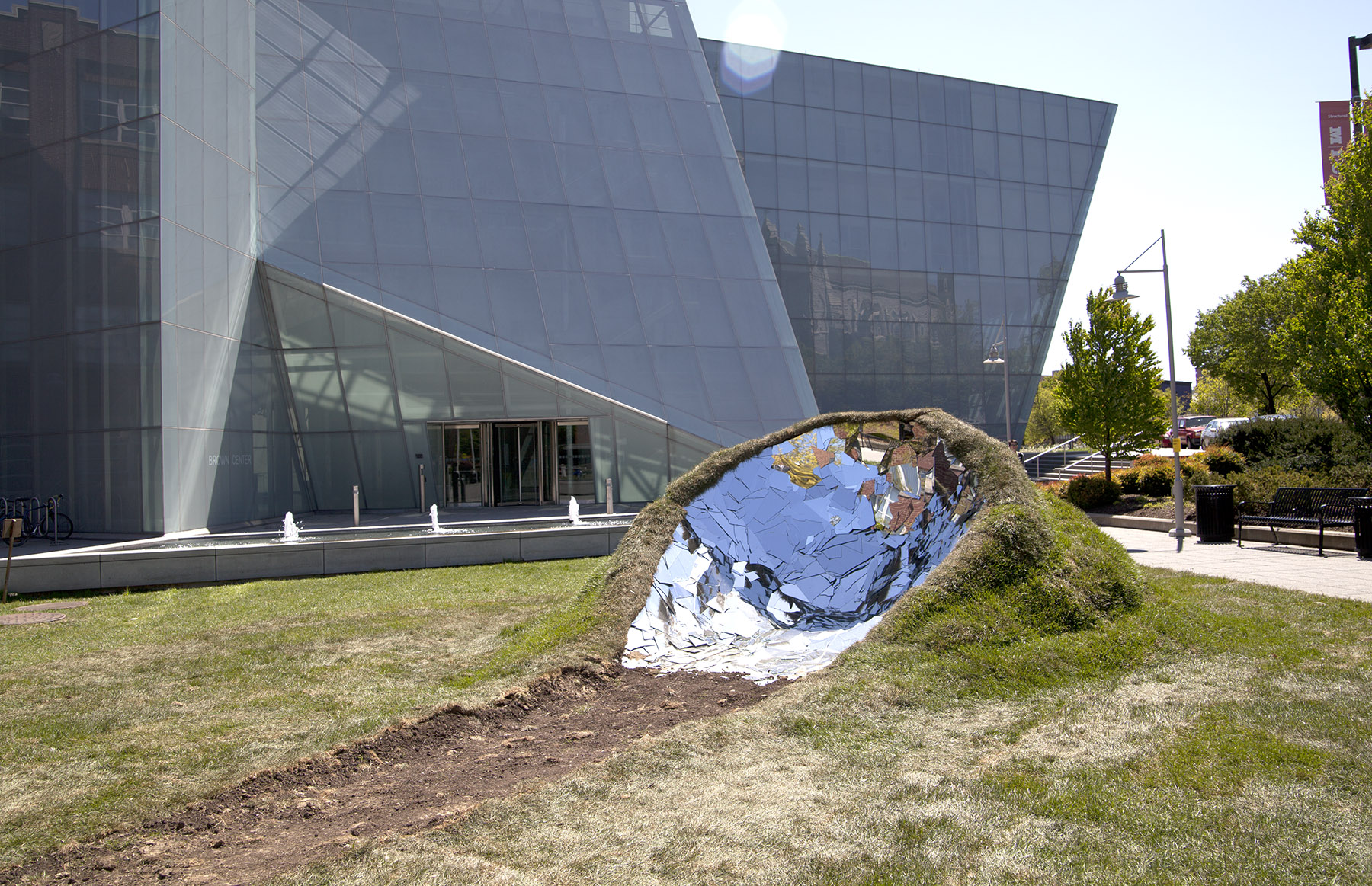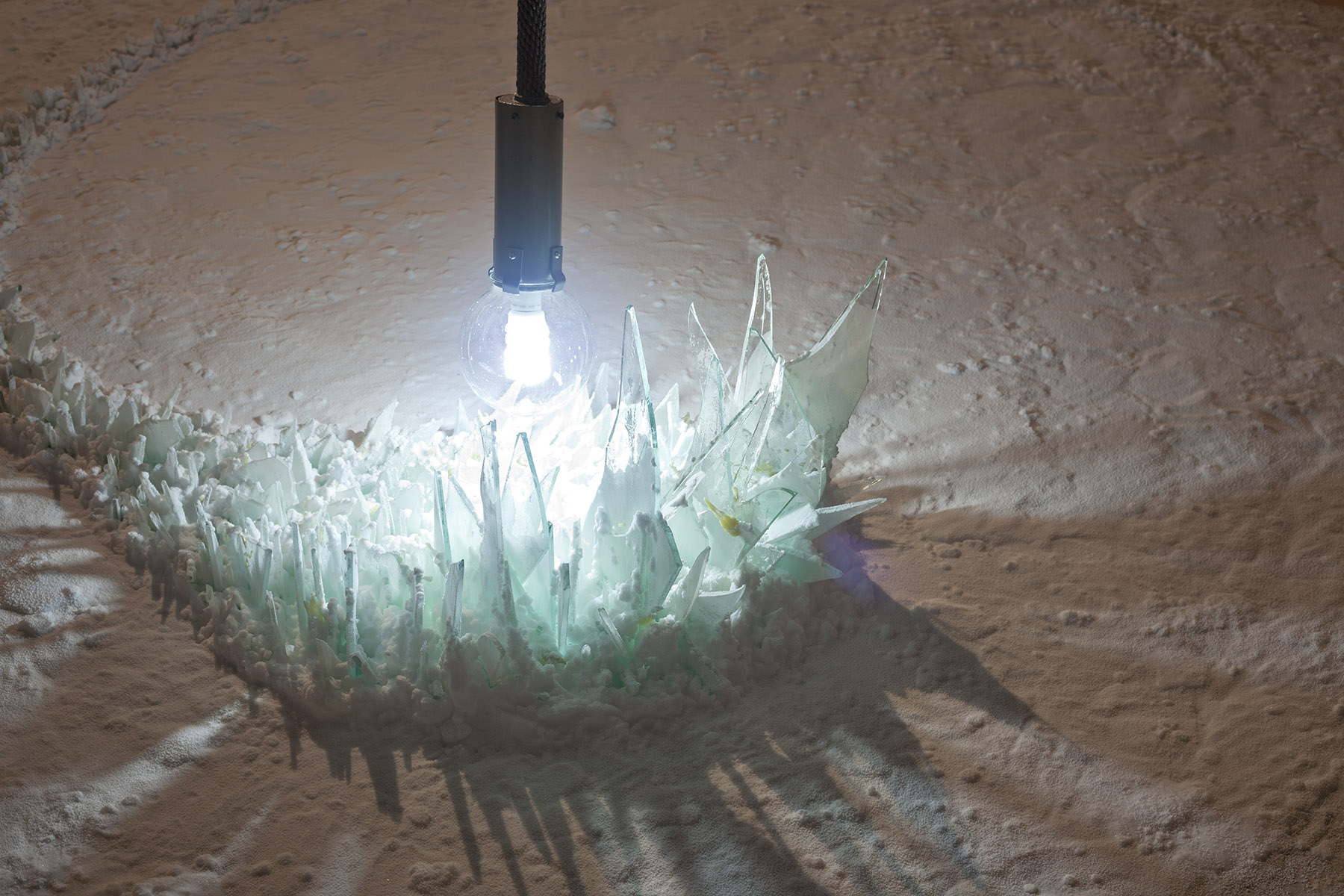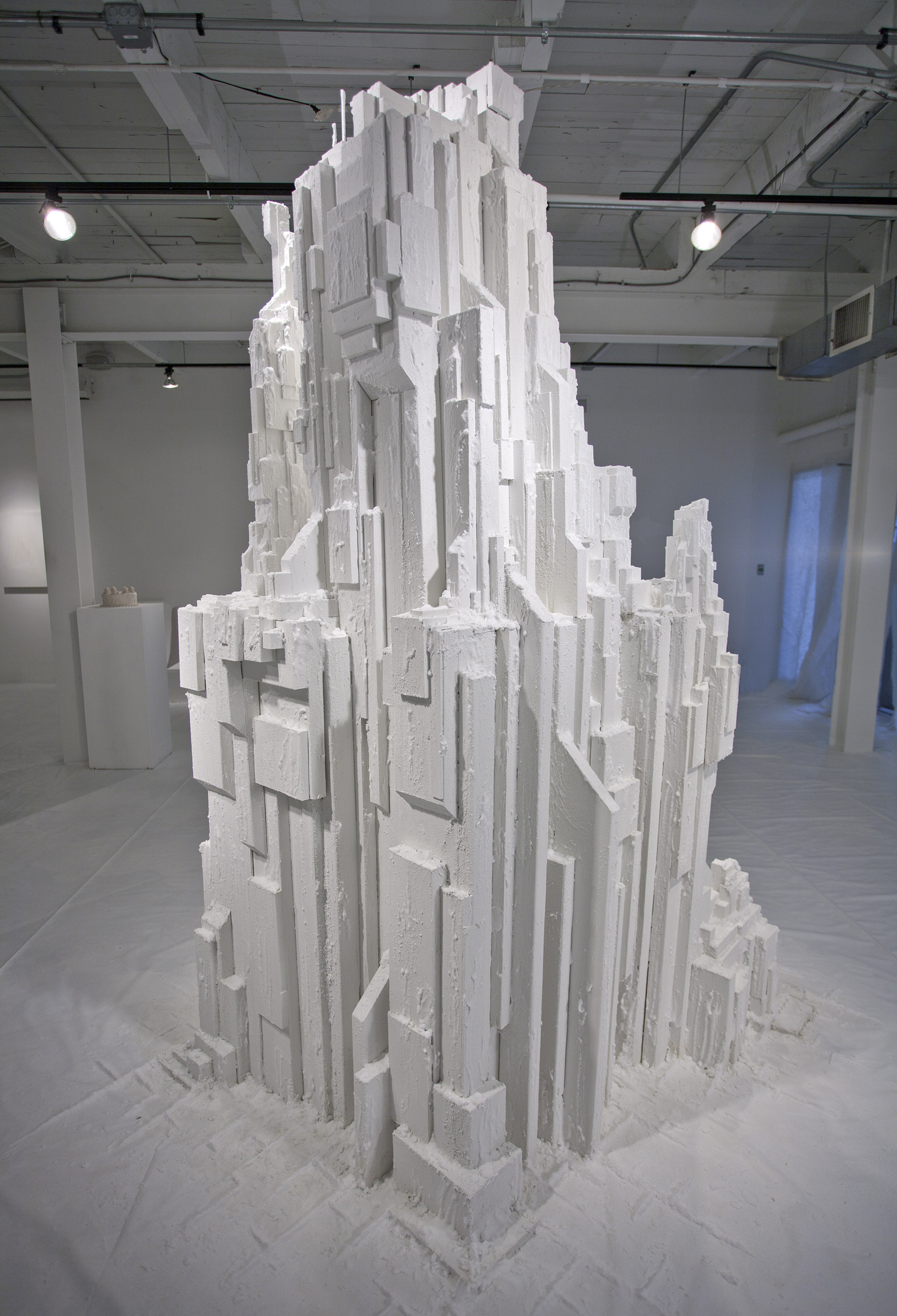Jonathan Latiano / interview




[Kwon] The interest and research of various scientific fields of study such as biology and geology stand out in your artworks. What is the contextual base of your recent project <Nanotecture>?
[Latiano] Fields of science such as biology and geology are the starting points for much of my artwork. <Nanotecture> was a collaborative installation with fibers artist Jennifer Strunge. We were both really interested in the converging forms throughout nature that accrue on both the microscopic and monumental levels. Nanotecture draws inspiration from similar patterns and textures that repeat regularly when observing different animals, plants and minerals through the eye of the electron microscope. The installation inhabits a stairwell made of drywall and other stark construction materials, viewed at the microscopic level though those same materials display an incredible array of surfaces and structures. Because of these recurring forms in our universe the structures also refers to larger biological forms found in nature such as coral reefs, tube worm colonies and fungal spores.
[Kwon] The work <Colony III> seems to be a futuristic yet simultaneously classical architectural structure. What does it symbolize?
[Latiano] Colony III is loosely based off the mounds created by the Australian termite, which have always fascinated me. At the time of conceiving and fabricating the piece I was reading two books: Anthill by E.O. Wilson and Invisible Cities by Italo Calvino. I am drawn to the correlation between the structures build by hive insects and manmade cities. While reading the two books simultaneously I was reminded of the large block cities I use to build as a child and the idea of storytelling and world building played heavily into the final version of the installation. Embracing an intuitive nature of construction, I first fabricated thousands of individual blocks of varying sizes; I then began to build the piece from the foundation up. While building the piece I let myself get caught up in the hierarchies and infrastructures of different metropolises. Most of these inner narratives were not obvious in the end product but the sets of rules that I created added an underlying system and logic to the overall structure.
[Kwon] I am curious about the production process of the work <Compacting Factors> installed in front of the building. Were there any difficulties related to the weather or external conditions, considering the form of the work?
[Latiano] <Compacting Factors> was the first long term installation I built to exist outdoors and was conceptually dependent on the day-to-day fluctuation of the atmosphere. I wanted to create a piece that focused on the relationship between the ground, the sky and the viewer being somewhere in-between. In addition to emphasizing this relationship it was important that the work was seamlessly blended into its surroundings to incorporate and activate the existing plaza around it. The piece was designed to be resistant to rain and high winds but one weather event that I was unprepared for was draught. The month of April, 2012 in Baltimore, Maryland was one of the driest in years, the grass that covers the installation was real and was in constant risk of drying out and dying which would have destroyed any allusion of it looking natural in its environment. The solution that I settled on was to water the piece every night when the piece was less likely to be viewed by passers by.
[Kwon] I guess there would be some media that are included in your works that go through some changes according to time. How are such works managed during and after the exhibition?
[Latiano] The material that changes the most in my installations tends to be salt. Almost always when I have used salt in my work it is applied on site in the gallery as a kind of highly concentrated paste that I have prepared offsite. As the salt paste evaporates and hardens it forms its own structure and patterns that are much more interesting than anything I could mimic through conventional building materials. This process will continue over the course of the exhibition, which adds to the narrative of the work as well. When I use salt in my artwork I am often thinking about concepts of time and growth, particularly through the lens of geology, which is then physically happening which the piece. Once the show has run it’s course the salt is collected and disposed of, adding to the ephemeral nature that many of my installations embrace.
[Kwon] I would like to know about the course you are teaching at the university. Please tell us about the parts that you most help and emphasize to your students.
[Latiano] One course that I am teaching right now is Site-Specific Installations at the Corcoran College of Art and Design in Washington DC. In addition to approaching all assignments through the dialogue of conceptualization and fabrication as I would with any art class, I also focus heavily on the successful implementation of an installation, whether that be a gallery or otherwise. To truly incorporate a site-specific installation into a space is one of the most challenging elements of the genera. Unlike paintings or traditional sculpture, which can more often than not, be simply placed in a space, installation sculpture should activate the architecture of the world around it and make the viewer hyper aware of the physical space around then in relation to the work presented. I try to instill in my students how the content of a site-specific installation cannot be removed from the context of its environment.
Jonathan Latiano received his BA in Studio Art from Moravian College in Bethlehem, Pennsylvanian in 2006 and his Masters in Fine Art from the Maryland Institute College of Art in 2012. Jonathan has exhibited in Baltimore, Maryland, Washington DC, New York City and London England. In May of this 2013, Jonathan was the recipient of the 2013 Mary Sawyers Baker Prize. Jonathan currently resides and works in Baltimore, Maryland and teaches at The Corcoran College of Art and Design in Washington DC.
Image Courtesy of Jonathan Latiano
This interview was published in bob Magazine Vol. 115 (February 2014) pp. 116-121
